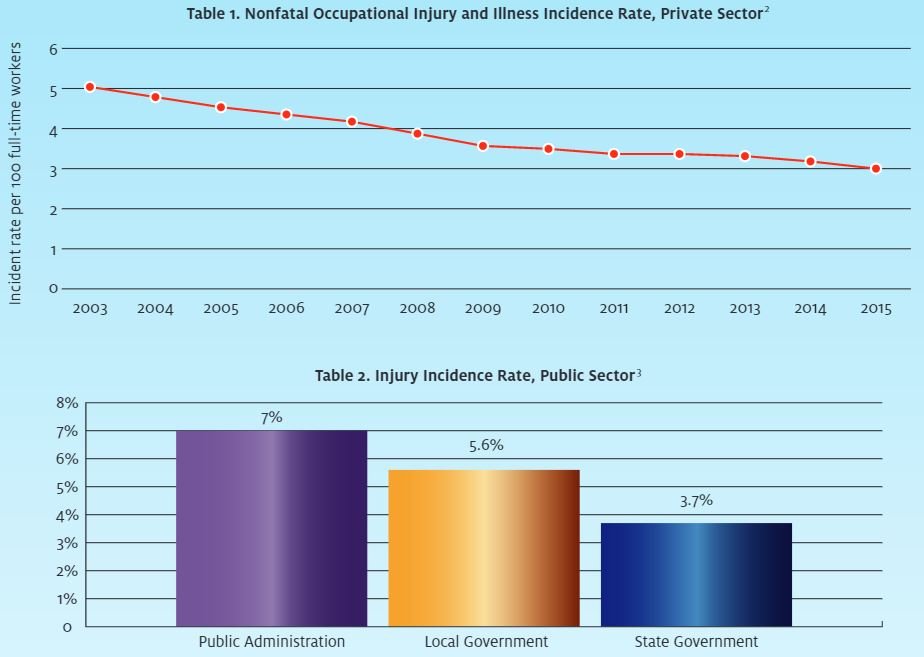Over two-thirds of urgent care centers offer a blend of occupational medicine services (generally defined as treatment of workers compensation injuries, conducting physicals for compliance or fitness for duty, and substance abuse testing), according to the Urgent Care Association.1 One challenge for those that do is that the overall incidence of workplace injuries has declined significantly this century, due to an overall shift from a manufacturing to a service and information economy, the offshoring/outsourcing of U.S. manufacturing jobs, and employer investments in safety, prevention, and automation. Simply put, employees in less physically demanding jobs get injured less frequently. So, whereas private sector injury rates were nearly 5% in 2003, Table 1 illustrates they have declined to just over 3% the last few years.
This decline has not affected all industries equally, however. As Table 2 illustrates, injury rates in the public sector (ie, municipal employees such as police, fire, sanitation, transit and parks/recreation) are more than twice the private sector average. These are jobs that also require complex physicals, vaccinations, and drug testing. To build volume in occupational medicine, urgent care sales efforts should target employees in the highest incidence industries first, starting with municipal government employees.
The takeaway is if you’re going to do occ med, focus on city police/fire, public transit, sanitation, and parks/recreation employees who have high injury rates.
- Urgent Care Association. 2016 Benchmarking Study. Available at: benchmarking.ucaoa.org. Accessed February 19, 2017.
- Bureau of Labor Statistics. Employer-reported workplace injuries and illnesses—2015. Available at: https://www.bls.gov/news.release/archives/osh_10272016.pdf. Accessed February 19, 2017.
- Bureau of Labor Statistics – Incidence rates of nonfatal occupational injuries and illnesses by case type and ownership, selected industries, 2015. Available at: https://www.bls.gov/news.release/archives/osh_10272016.pdf. Accessed February 19, 2017.

